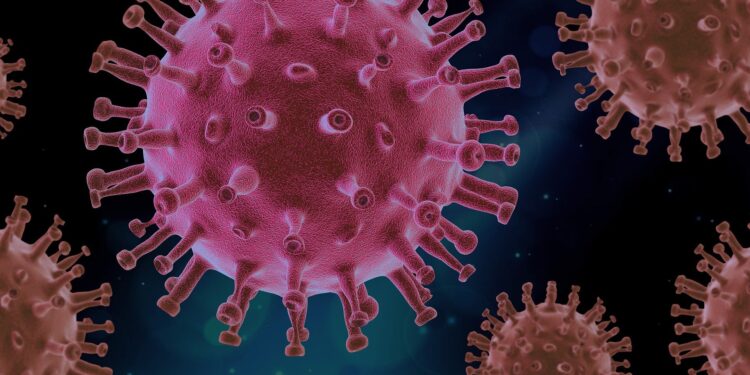Credit: CC0 Public domain
The 2022 FIFA World Cup ended with Argentina’s narrow victory over France on penalties, but it was also a triumph for SARS-CoV-2 with a significant increase in cases , some of which could have been avoided, according to researchers at York University. .
New research published today and led by York used the 2022 FIFA World Cup as a case study to help determine the best ways to mitigate the spread of the virus and hospitalizations during mass gatherings at future. A technique was used to sample initial conditions arising from possible matches between visiting teams, which then formed the basis of independent simulations of each match.
The article titled “Modeling Disease Mitigation in Mass Gatherings: A Case Study of COVID-19 at the 2022 FIFA World Cup” was published in the journal PLOS Computational Biology.
The paper’s lead author, Martin Grunnill, a postdoctoral researcher at York, and an academic-industry collaborative team, including Distinguished Research Professor Jianhong Wu from the Faculty of Science, found that pre-travel screenings did not not much to prevent infections and hospitalizations.
However, pre-match screening of spectators and match staff, either with a rapid antigen test half a day before or with a reverse transcription polymerase chain reaction test one and a half days before the match, is required. has been shown to be more effective than pre-travel screening. Researchers found that pre-travel and pre-game testing provided even better results, but what worked best was ensuring all visitors received a COVID-19 vaccination, second dose, or dose of reminder, a few months after their departure for the tournament.
“This precaution reduced the infection rate and particularly the hospitalization rate,” says Grunnill.
Before the FIFA World Cup, COVID-19 cases and hospitalizations were declining in Qatar, but began to increase during the tournament, peaking at the start of the quarterfinals.
“The ambitious goal of the partnership research includes the development of modeling technologies that can be used to assist in the preparation of large mass gatherings, whether religious or sporting in nature or a major festival,” says Wu. “We hope that these platforms can be used to help manage the risk of respiratory infection during the upcoming FIFA World Cup, hosted by North America, and the Paris Olympic Games this summer.”
Wu points out that even before COVID-19, large events attracting tens of thousands of people fueled the spread of communicable diseases, sometimes on a global scale.
“In the case of international events like the FIFA World Cup, where visitors come from all over the world and return home, the risk of infections spreading beyond the host country is higher,” explains Grunnill.
This work is part of an ongoing York-Sanofi collaborative project which aims to develop a generic modeling framework tailored to specific events involving intensive socio-economic activities in order to support the preparation of these events with minimal risk of outbreak and spread of disease.
More information:
Martin Grunnill et al, Modeling disease mitigation in mass gatherings: a case study of COVID-19 at the 2022 FIFA World Cup, PLOS Computational Biology (2024). DOI: 10.1371/journal.pcbi.1011018
Provided by York University
Quote: Mitigating the spread of COVID-19 during mass gatherings: Lessons from the 2022 FIFA World Cup (January 18, 2024) retrieved January 18, 2024 from
This document is subject to copyright. Apart from fair use for private study or research purposes, no part may be reproduced without written permission. The content is provided for information only.



